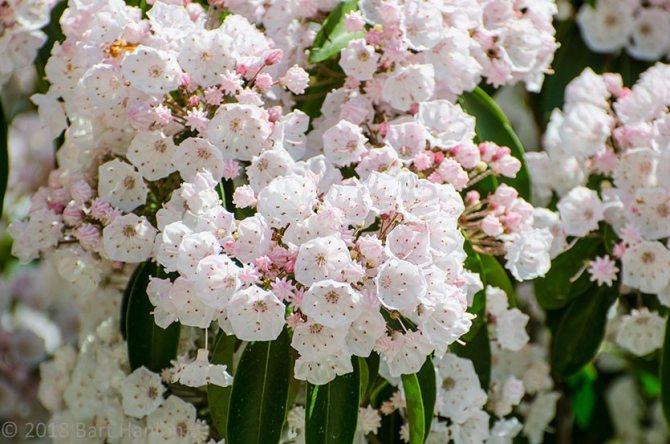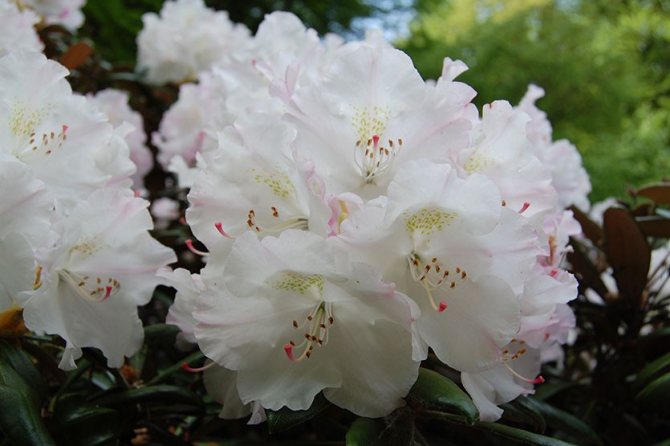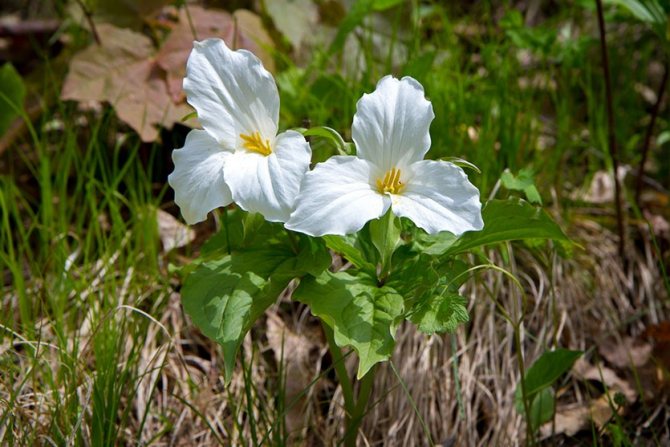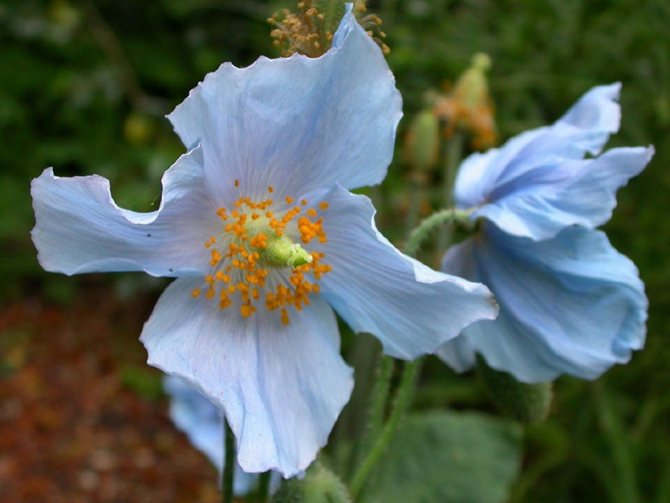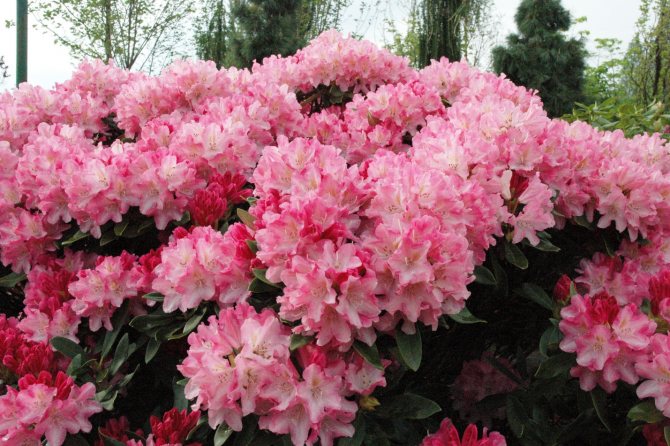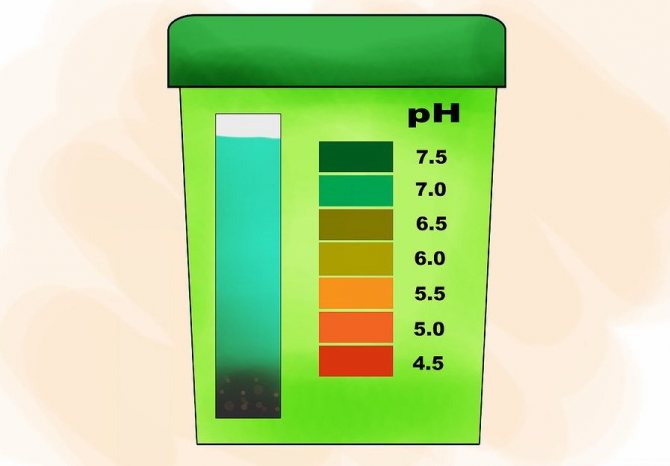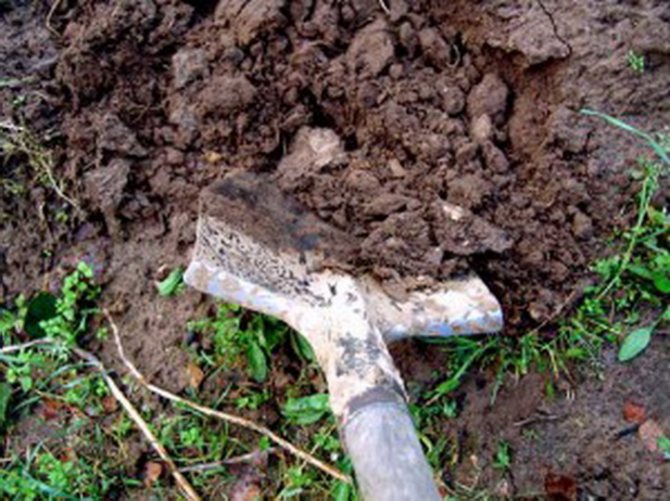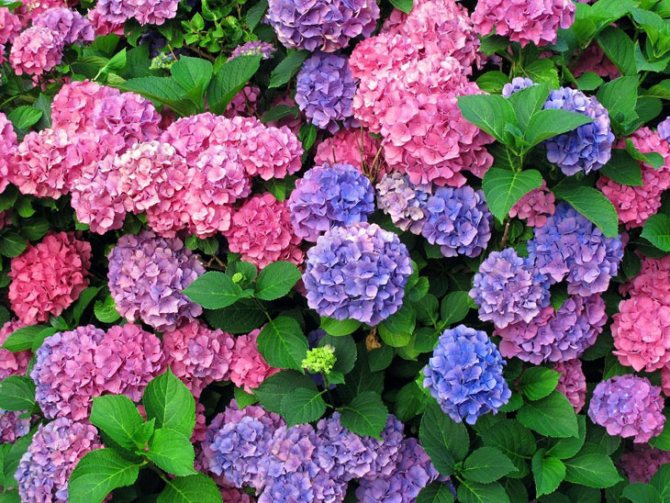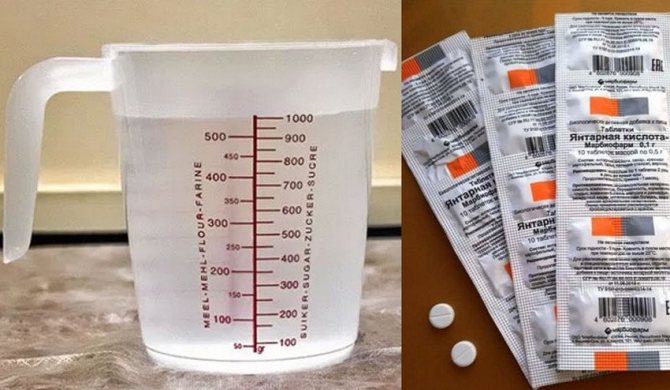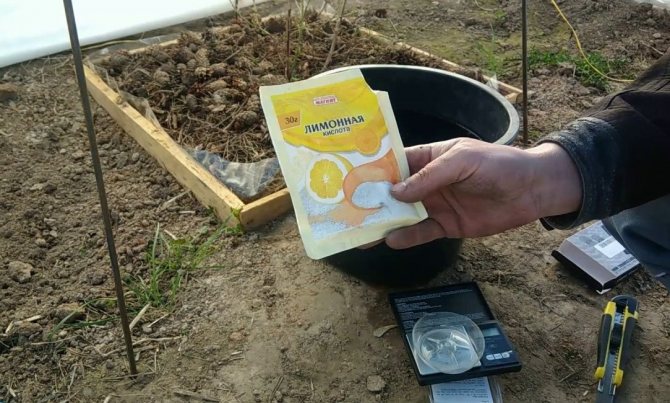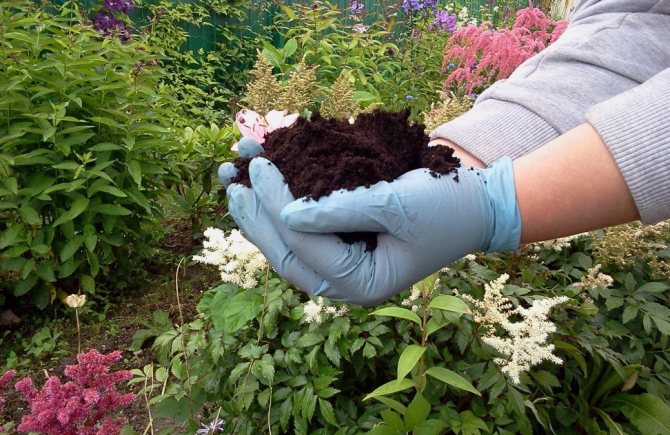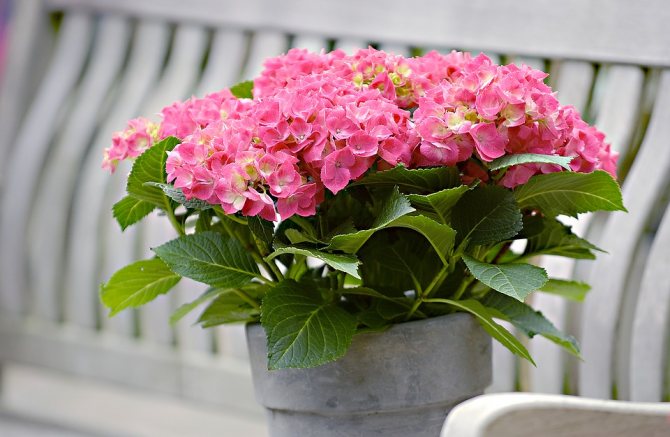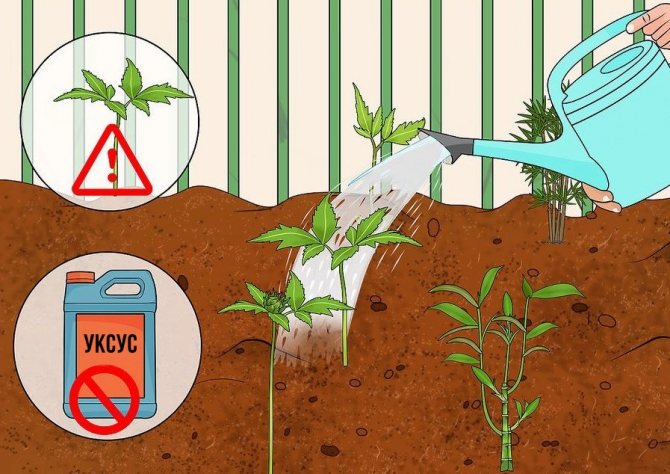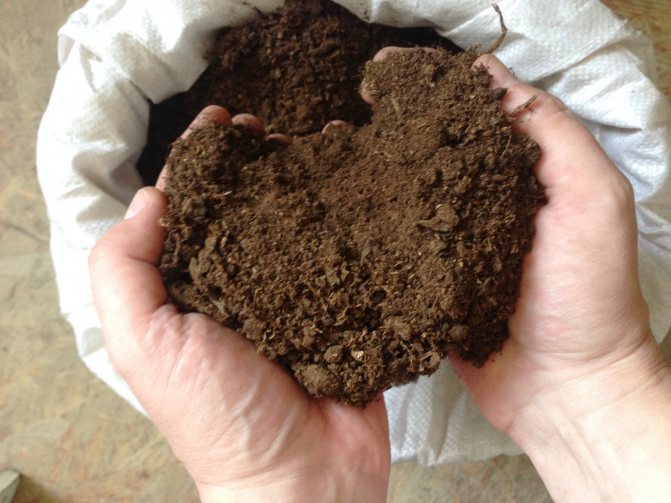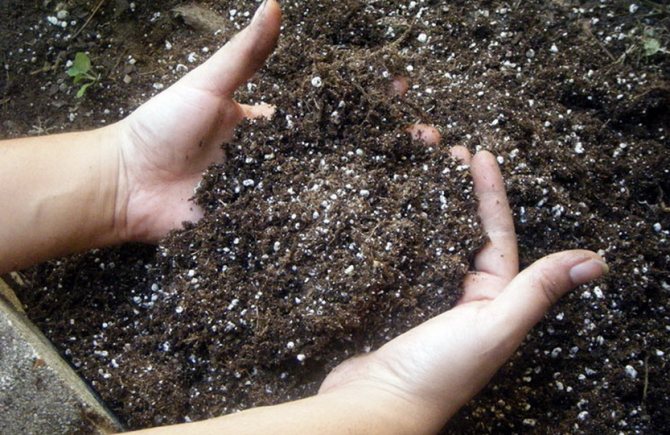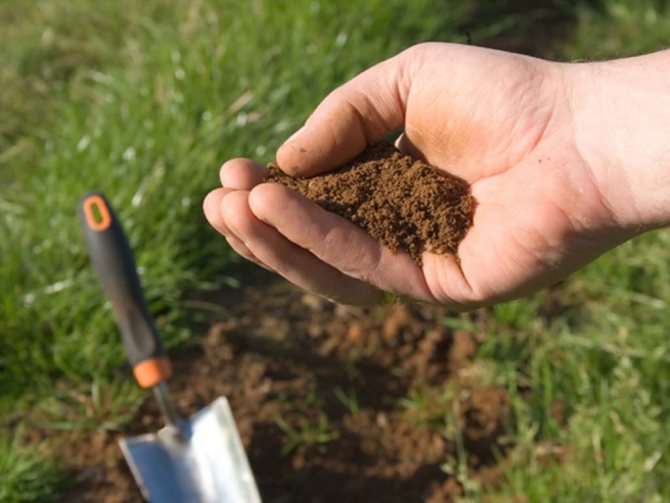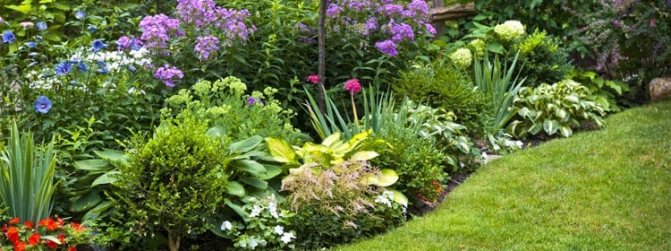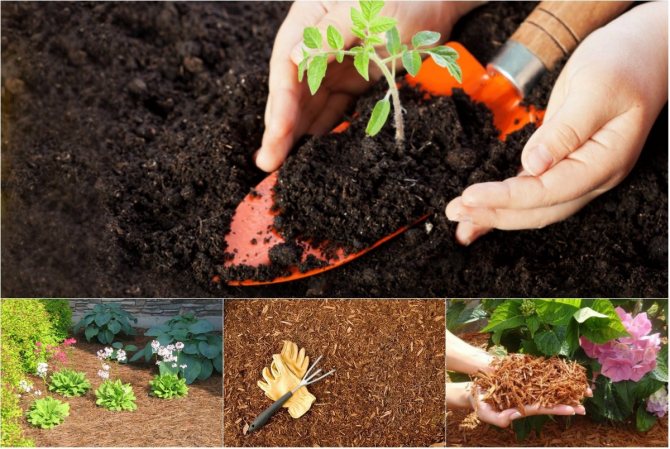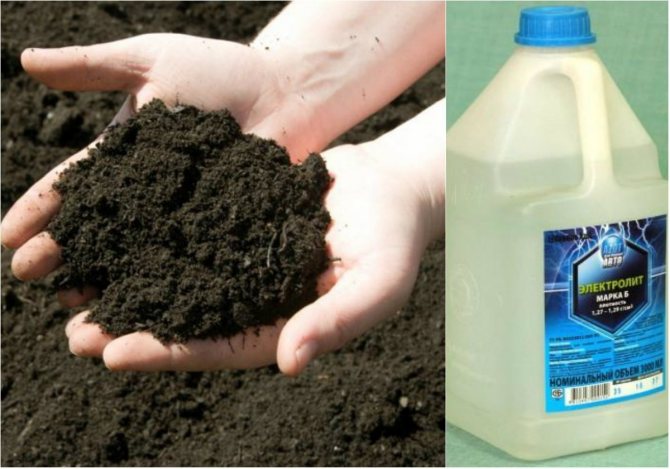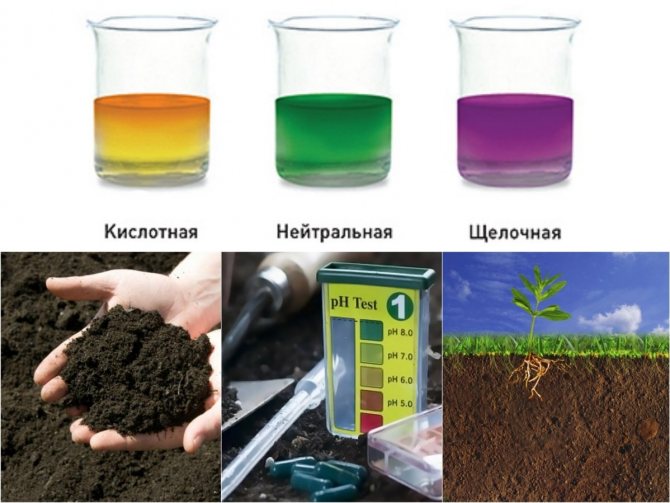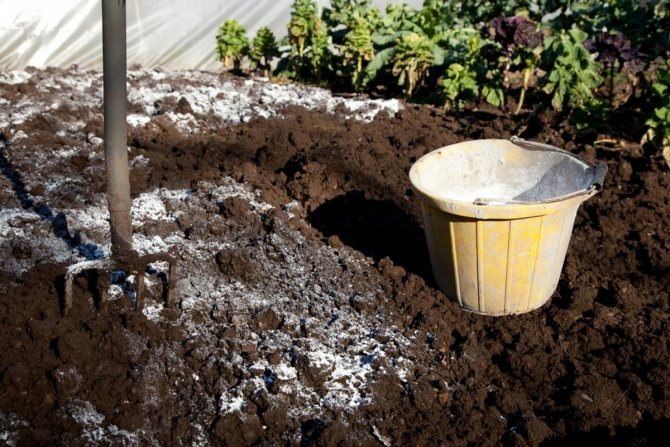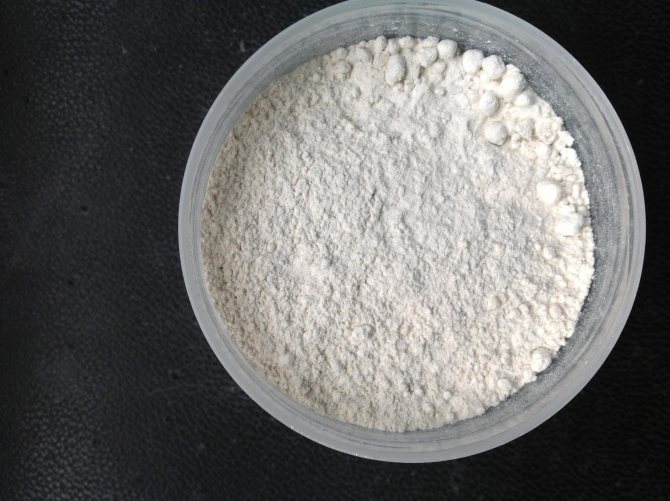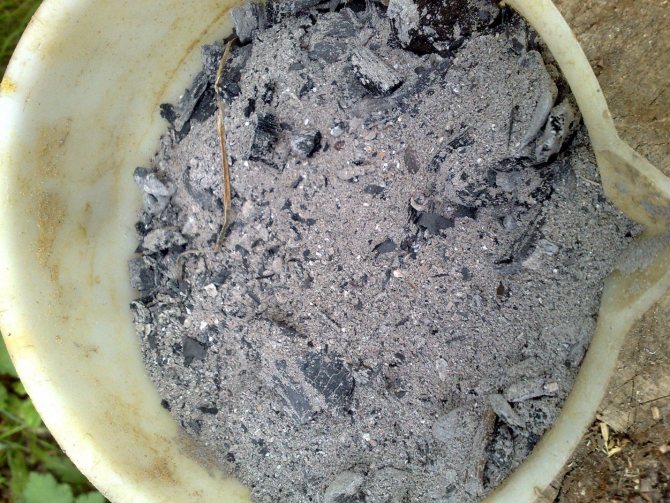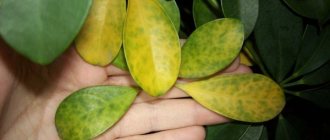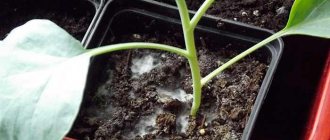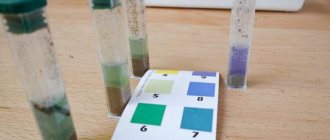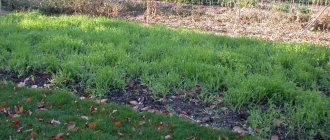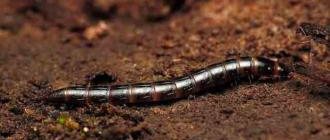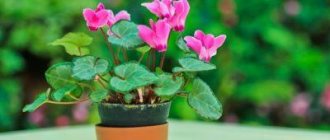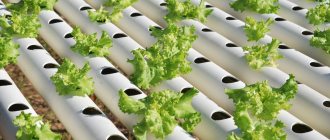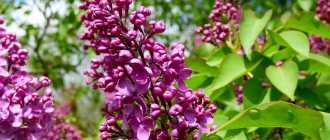—Search by diary
-Quotebook
A walk through the gardens - “Flower Jam. "" The day will come when you open your eyes and see: the garden is standing.
The pink country of VDNKh The faded rose breathed sadly, Admiring the crimson sunset of the sun, Moved.
Siamese tulip Siamese tulip. he - Turmeric - is also a relative of ginger, oche.
Gardens for "Flower Jam" The wind plays with foliage in the branches, The garden greets the dawn with the singing of birds, S.
City flowers. In cities where the dawn is not visible in winter, Where the distance is hidden behind the roofs, In the spring.
—Labels
—Links
Thursday, April 27, 2019 13:58 + in the quote pad
Most often, gardeners-gardeners are faced with the need to deoxidize the soil in the garden. It just so happened that most cultivated plants like neutral, alkaline and, in extreme cases, slightly acidic soils. Most, but not all. There are plants that love acidic soil. And if you want to plant an adorable rhododendron, heather or thuja in your dacha, you will have to do exactly the opposite - acidify the soil in the garden.
We suggest talking about how to make the soil acidic, which plants are suitable for acidic soils, and how to maintain the acidity of the soil at the proper level in the years to come.
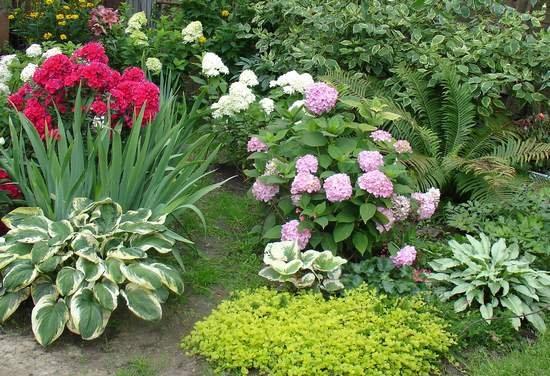
Recall that the acidity of the soil varies from 1 to 14 pH: the most acidic is 1, the neutral is 7, and the most alkaline is 14. The acidity is most accurately determined using an indicator - litmus test (they are sold in all garden stores). But there are also express methods for assessing the acidity of the earth from improvised methods. Of course, they do not give any specific numbers, but you will get a rough idea of the pH of the soil.
1) About 20 grams of soil is poured into a bottle with a narrow neck. 5 grams of crushed chalk is wrapped in a newspaper and thrown into the same bottle. A finger-holder is put on the neck of the bottle, wrapped in a cloth and shaken for about 5 minutes. If the fingertip has pouted completely, it means that carbon dioxide has been released, and the soil is acidic (reaction of acid and chalk); if pouted a little - the soil is slightly acidic; the fingertip did not even think to puff up - the soil is neutral.
2) Put several cherry or currant leaves in a transparent container (jar), pour boiling water over it, wait until the "tea" cools slightly and add a small lump of soil to it. The reddish tint of the water indicates an increased acidity of the soil, blue - about neutral, greenish - about slightly acidic.
Remember that even in a small area, the acidity of the soil can fluctuate significantly. Therefore, you need to define it locally.
By the way, if such weeds grow in your garden - nettle, fragrant chamomile, wild radish, highlander, mosses, sorrel, plantains, sow thistle, cinquefoil, bear's ear, navel - this is clear evidence of acidic soil.
Flowers for acidic soils are: lilies of the valley, asters, primroses, foxgloves, poppies, petunias, purslane, cornflowers, sunflowers, sage, decorative peas, bindweed, nasturtiums, roses, tulips, crocuses, calendula, chrysanthemums, forget-me-nots, hyacinths, gladioli, delphiniums, anthuriums, gorse, zinnias, trilliums, carnations, etc.
Remember that even in a small area, the acidity of the soil can fluctuate significantly. Therefore, you need to define it locally.
By the way, if such weeds grow in your garden - nettles, fragrant chamomile, wild radish, highlander, mosses, sorrel, plantains, sow thistle, cinquefoil, bear's ear, navel - this is clear evidence of acidic soil.
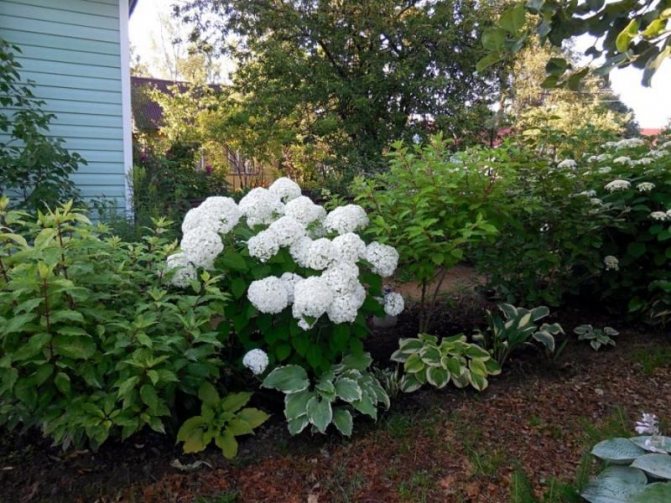

Bushes and trees for acidic soils are hydrangeas, heathers, viburnum, honeysuckle, dogwoods, cranberries, rhododendrons, buckthorns, Japanese quince, barberries, birch, magnolia, acacia, blueberry, witch hazel, juniper and almost all conifers.
Before making the soil acidic, prepare pits for planting plants. If you plan to create something like a garden with plants - lovers of acidic soil, you should replace all the soil with a special substrate. For example, in rhododendrons, the root system is shallow, so they prepare a hole up to 70 cm deep and 35-40 cm wide. If the soil is clayey, the hole should be shallow (about 20 cm), but wide (1 m).
For low-growing heathers - these are cranberries, lingonberries, bearberry, erika, haulteria - it is enough to replace the substrate by 10-15 cm.When planting coniferous crops, the size of the pit should be half a meter larger than the earthen coma, and one and a half to two times the size of the container.
The substrate for plants loving acidic soil is based on non-neutralized top peat (pH 3.0). Rotted pine litter and nutritious soil (peat: litter: soil - 2: 1: 1) are added to it. After that, 5-10 grams of garden sulfur and 100 grams of fresh sawdust are added to 1 "cube" of the substrate. If the soil is heavy, clayey, it is advisable to add 1 kg of sand to the acidic soil.
It is not difficult to do this - annually they make 5-10 grams of sulfur per "square" of plantings, mulch with coniferous sawdust or litter, feed with acidic mineral fertilizers (ammonium chloride, urea, ammonium nitrate, ammonium sulfate, superphosphate, ammophos). If in this case it is not possible to maintain the acidity of the soil at 4.0 pH, you can act in a more radical way - water the plants with special acidic water. To do this, take 1 tablespoon of 9% acetic acid in a bucket of water, or 5 grams of citric acid for 3 liters of water. You can water plants with acidic water no more than once a month. Thus, plants for acidic soils can appear in any, even the most "alkaline" garden. To do this, you just need to know how to make the soil acidic.
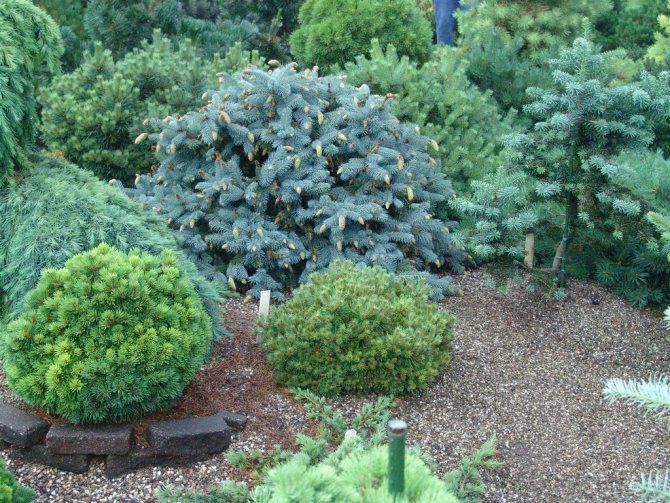

| Categories: | Trees, shrubs. |
Fruit, decorative, useful and bonsai.
Tags:
How to make the soil acidic for coniferous heather hydrangeas?
Cited 30 times Liked: 15 users
Your garden contains heathers and ferns, lingonberries and blueberries, hydrangeas and rhododendrons. In this case, in addition to the generally accepted agrotechnical methods of care, you need to know how to acidify the soil. For many, including the above plants, the acidic reaction of the soil solution (pH 7.5) or the plant for growth needs an environment that is more acidic than that available on the site.
Why don't crops like alkaline soil?
Saline soils formed on a limestone base in arid steppe and forest-steppe regions have an alkaline reaction. Often they border on southern chernozems, according to the texture - clay or loam. The pH of the environment above 7.5–8 units adversely affects fertility and agrophysical properties.
- As a result of an alkaline reaction, such important trace elements as iron, manganese, boron, phosphorus, zinc pass into insoluble hydroxides and become inaccessible for nutrition. In this case, even organic matter and mineral fertilizers do not help - the plants feel a lack of vitamins in the alkaline soil, slow down their growth, acquire a yellowish tint (leaf chlorosis).
- Water-physical properties deteriorate. In a dry state, the substrate is too dense, poorly aerated, after rain or watering it becomes viscous, floats.
When working with alkaline soil, the first thing to do is to loosen it and bring the acidity to neutral parameters. How - we will consider below.
Note! Take your time to acidify the soil under fruit trees - apricot, peach, mulberry, quince. They prefer a pH around 7-8. Some ornamental plants do not like the acidic environment - maples, hawthorn, gleditsia, sycamore, clematis, peonies.
When is neutral soil not suitable?
The soil is considered neutral, in which acids and alkalis are maximally balanced and neutralize each other. This is the optimal environment for the development of beneficial soil microflora, the assimilation of nutrients by plants. Ideal for growing most root vegetables, legumes.
The neutral acidity of the soil can be a reason for acidification in case it is necessary to create conditions for crops that need a weak or medium acidic environment. Slightly acidic soil (pH within 5-6) is needed for potatoes. Taking into account the fact that, as a rule, a large plot of the garden is allocated for this crop, it makes sense to lower the neutral acidity by 1–1.5 units, which will ensure better absorption of nutrition and increase the yield.


Weakly acidic soil environment - a guarantee of potato health
Why acidify the soil?
To begin with, blueberries traditionally grow in acidic soils, usually marshy. Most of the other plants die here. That is why, in order to survive, blueberries had to change, adapt to unfamiliar conditions.


If you dig up its root system, you can see that it is practically devoid of thin branches - they will simply rot in the swamp. But on the roots there is a white bloom. This is not a disease, as it might seem to the uninitiated. This is a type of mushroom. Experts call this symbiosis mycorrhiza, combining the Greek words “myco + rhiza”, that is, “mushroom + root”. As a result of this neighborhood, the plant receives the necessary trace elements and moisture from the fungus, which it assimilates from the soil. If, due to inappropriate conditions, the fungus dies, then the blueberry will grow normally and will not be able to develop. And he needs an acidic environment to survive. Therefore, acidifying the soil for blueberries is the only way to harvest.
How not to harm hydrangeas
Why do hydrangeas have green flowers
The soil composition is very important when growing hydrangeas. It depends on him not only how quickly the flower will grow, but also how it will bloom.
In order for the hydrangea to please its owner, it is necessary to create the right conditions:
- Choose the right place;
- Prepare nutrient soil;
- Water in a timely manner;
- Apply fertilizers;
- Carry out pruning.
Hydrangea grows well on acidified, well-fertilized soil, needs regular watering, but without moisture stagnation and timely pruning. She is responsive to the right growing conditions and thanks for them with bright colors for a long time.
Optimal for blueberries
Most cultivated plants grown in vegetable gardens and orchards prefer slightly acidic or neutral soil. If you give specific numbers, then the optimal indicator is considered to be a pH in the range of 5.5-7.5 units. Therefore, it is necessary to think about soil acidification only if the indicator has increased above this parameter.
However, blueberries are very different from most plants in this requirement. It grows best if the soil has an acidity of about 3.5-4.5 units. When the acidity rises to 5.5 (the minimum limit for many garden plants) and higher, blueberries begin to hurt and even die. Of course, there is no question of a rich harvest.
How to acidify the soil for hydrangea
Soil balance
How to change the color of a hydrangea
Before acidifying the earth, it is necessary to determine its balance.To do this, you can use a litmus test, which is sold in specialized stores. You can do this in the folk way, for this you need 9% vinegar. Pour some vinegar onto loose soil; with alkaline soil, a characteristic foaming will appear.
Soil acidifying agents
On a note. How to pour citric acid on hydrangea? A simple and safe way to acidify the soil is to add ordinary citric acid: 1 tsp. bred in a bucket of water. You can also acidify with oxalic, acetic or malic acids. They are bred at the rate of 100 ml per 10 liters of water and the flower beds are watered.
Another affordable way to improve soil quality is to use rotted foliage. It has a beneficial effect on the quality of the seat and water exchange. Also, acidification is carried out using sawdust, peat, bark. First, their acidity with the help of acidic water or sulfur is brought to 3.5-4.5 pH, then they are introduced into the soil.
How to acidify the soil for hydrangea? Before planting the plant, you need to take care of the soil. During the preparation of the soil, a deoxidized electrolyte solution is introduced into the soil, or a solution can be prepared from sulfuric acid. To prepare an acidifier based on an electrolyte (it is still poured into batteries), add 10 ml of the drug to 10 liters of water. Use a solution for watering the soil.
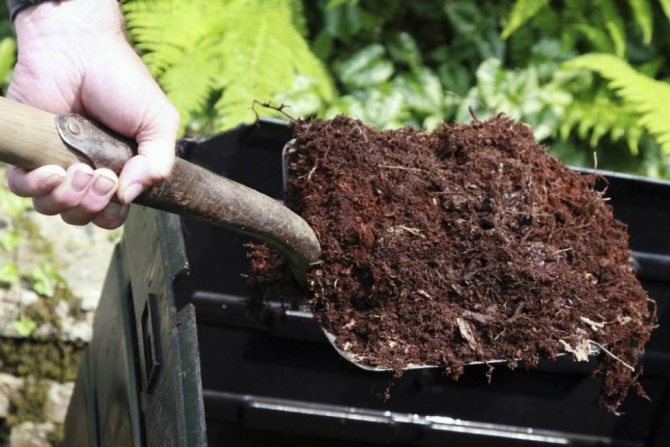

Rotted foliage compost
Tips for increasing soil acidity:
- Loose soils are easier to acidify. This is done by adding organic matter.
- Acidifying clay and heavy soils is more difficult. Here, the same introduction of organic substances, on the contrary, lowers the acidity and makes the soil alkaline.
- When organic substances are introduced into loose soils, then it will not be able to acidify immediately, but gradually, during their decomposition. If active help is required, then sphagnum, compost from oak leaves, is introduced for acidification.
- On heavy clay garden soils, sulfur can be applied. With the participation of bacteria, sulfur is converted into sulfuric acid. To do this, 1 kg of sulfur is applied to 9 sq. m, it is best to do this in advance, at least a year before planting.
- Ferrous sulfate is also used to increase the acidity of clay soils. This method can be used directly in the year of planting. Its action is quite fast, the soil balance can be acidified in 15-20 days. Only in this case it is necessary to oxidize ferrous sulfate. Consumption rate - 0.5 kg per 9 sq. m.
- Ammonia-based fertilizers are one way to acidify soil. There are quite a lot of such fertilizers, but potassium and calcium nitrates are contraindicated for hydrangeas, due to the fact that these ammonia fertilizers, on the contrary, alkalinize the soil.


Fertilizers based on ammonia
Watering with acidified water
When growing hydrangeas, it is important that not only the soil has the required acidity, but also the water used for irrigation meets the required indicators, because it can also be alkaline. Therefore, before irrigation, the level of acidity of the water is determined and, if necessary, acidified - this is a very effective way of growing hydrangeas on alkaline soils and not only.
How to acidify water for hydrangea watering? Hydrangea paniculata loves sunlight. In bright sun, she needs daily watering. An electrolyte can be used for these purposes. The consumption rate is 1 ml of electrolyte per 10 liters of water, with which one plant is watered.
Cooking does not take long. A large barrel is taken. An electrolyte solution is diluted in it, in the above proportions. Add the same amount of ammonium nitrate. Used for daily watering.
Succinic acid for home hydrangea is the first emergency aid for flower disease. She will help him adapt to inappropriate conditions. You can also use regular lemon juice to acidify the earth.


succinic acid
Feeding hydrangeas with citric acid is applicable.If the soil balance is acidic, then to maintain the acidity level, you can feed it with a citric acid solution about once every 30 days. Add 1 tsp to a bucket of water. acid.
Interesting. If you follow these simple recommendations, you can select a site for planting with the desired soil and, if necessary, safely acidify the soil. In response to this, the hydrangea will delight with long and abundant flowering.
What plants need acidic earth
However, not only blueberries need acidic soil. Many other plant species can only grow and thrive normally on low pH soil. Berry crops include lingonberries, blueberries and cranberries. Quite a few shrub plants also need acidic soil - wild rosemary, rhododendron, heather, azaleas. Speaking of perennials, it is worth noting the fern, dientra, gravilat and primroses.
If you plan to grow any of these plants on your site, it will not be superfluous to remember the need for regular acidification of the land.
Features of agricultural technology
Fertile clay areas with low acidity are most suitable for growing hydrangeas. Hydrangea grows very poorly in sandy areas, a little better - on red soil.
Long-term sunlight and no wind are very important for the plant. It is advisable that the sun was on the site in the morning. When growing a plant in partial shade, it is not possible to achieve abundant flowering.
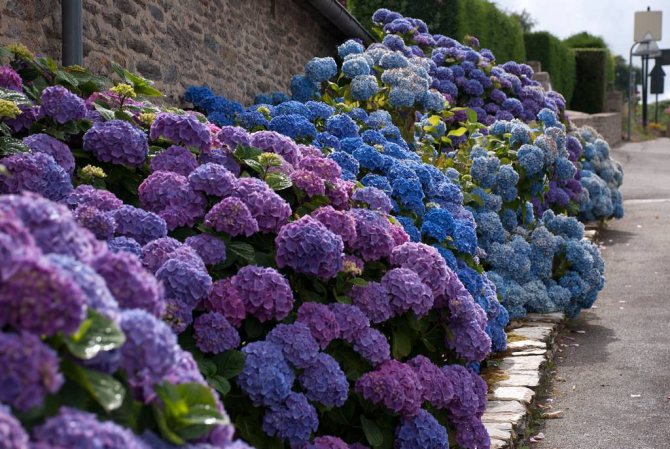

Hydrangea
When breeding hydrangeas in slightly acidic compounds, you can get the brightest flowers possible. If the balance is neutral, the growth of the plant is reduced and the flowers lose their brightness. Alkaline soils do not suit the flower at all. The plant grows very well on soil collected at the place where conifers grow.
Note! In some types of hydrangea, the shade of flowers is directly dependent on the balance of the soil. With increased acidity, you can see blue flowers, when grown on neutral soils - white or beige, on alkaline soils - pink or lilac.
Signs of lack of acidity
If blueberries are planted in an area where the pH exceeds optimal, then the fungus that lives on its root system dies. This leads to the fact that the plant does not receive enough nitrogen. Well, any experienced summer resident can easily determine this - the symptoms are known to everyone. As a result, the green leaves become lighter in color, turn yellow, and then die.


Not surprisingly, it is nitrogen that contributes to the growth of green mass: stems and leaves. And without it, the plant will not be able to grow new leaves, which stops the process of photosynthesis, and it dies. There is only one way to prevent this - to acidify the soil in time. We will talk about this a little later.
Why does soil acidification occur?
Acidity is the content of hydrogen ions in the soil. The more of them, the more acidic the soil is. To determine it, use the pH value.
According to its value, soils are divided into three types:


- slightly acidic - pH is more than 7.0;
- neutral - pH is 7.0;
- sour - less than 7.0.
Soils are considered to be truly acidic if their pH is significantly reduced (4.0 or less).
In most cases, the soil becomes acidic due to the natural processes taking place in it. This is facilitated by the "breathing" of plants, rotting organic matter in the soil. As a result of these processes, carbon dioxide is released, which interacts with water to form carbonic acid. The latter dissolves substances containing magnesium and calcium, after which they are washed out or carried away by earthworms. As a result, the amount of hydrogen ions in the soil increases and acidity increases.
Artificial acidification occurs with excessive use of nitrogen fertilizers.It can also occur in regions where acid rain is frequent.
Determination of the acidity of the earth
However, experienced summer residents will try not to lead to a situation in which the plant will hurt and may even die. Therefore, before planting blueberries on their site, they will try to gather more information about the soil prevailing on it. Of course, it is desirable to have a special device for this, but it is quite expensive, which is why it is not suitable for private use.
Therefore, it is much easier to use a litmus test: a disposable, but reliable, simple and very cheap tool. It is very simple to use.
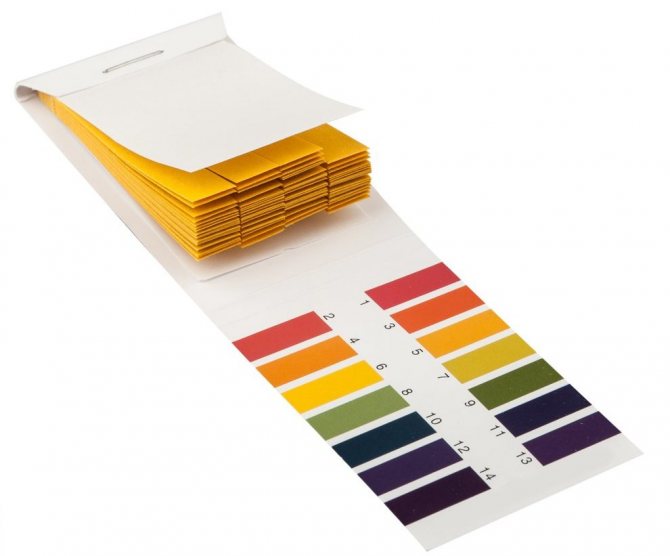

It is necessary to dig several holes about 20-30 centimeters deep (as the blueberry roots occur). From each you need to collect a little earth: about a few tablespoons. It remains only to mix it, slightly moisten it (if it is completely dry) and press a litmus paper to the soil. Gradually, the color of the paper will change. It remains only to check it with the indicator, which usually comes with litmus tests.
Yellow or light green colors correspond to 3 to 5 pH values - ideal for blueberries. If the color is orange or red - this is already a frankly alarming sign, indicating that the earth is too acidic, you need to raise the pH.
If the color is from deep green to blue or even purple, then the pH is already too high - you need to reduce this indicator. Fortunately, there are several simple and reliable ways to do this.
Moss
Moss (division Bryophyta) is the main lover of acidic soil. I love this fluffy velvety green carpet. Many amateurs breed a whole garden of different mosses. A few years ago, a good landscaping specialist advised me to carefully transplant the moss that has grown between the tiles, along the path near the spruce or near the apple trees to the desired location. Moss from the roof of the old grandmother's shed in the village is also perfect. It is better not to use forest moss on the site.


Different ways of soil oxidation
In general, there are several ways to properly acidify the soil for blueberries. For this, you can use special plants, organic fertilizers, acids, as well as mineral elements.
Each of the methods has unique characteristics. Some act very quickly, but increase acidity for a relatively short period of time, which means that you will have to repeat the procedure quite often. Other methods, on the contrary, give an effect only after a few months. But they turn out to be more stable and durable.
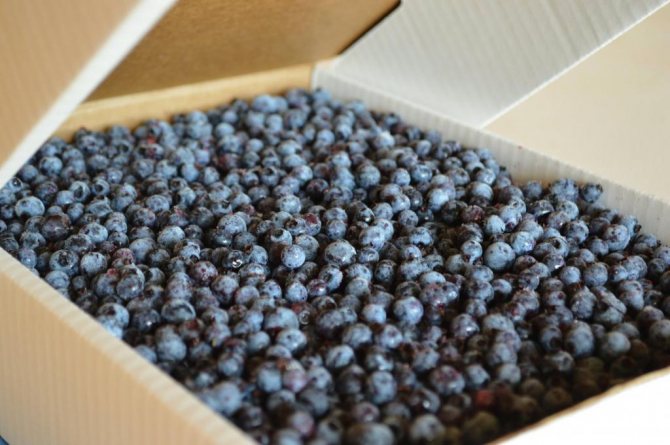

In addition, some methods are relatively harmless, you will definitely not cause irreparable damage to the soil, although the effectiveness is not very high. Thanks to other techniques, you can adjust the acidity, quickly changing it in the right direction. But in this case, you should be very careful - improper handling of reagents or a small mistake will inevitably lead to the fact that it will not be possible to grow at least something on the ruined soil very soon. Therefore, we will tell you about different ways of soil acidification.
Reasons for acidifying the soil
The overwhelming majority of horticultural and horticultural crops prefer a neutral or slightly acidic reaction of the soil environment. Numerically, this is the pH range from 5.5 to 7.5 units. Soil acidification is required if the pH is outside the upper limit of the fork (> 7.5) or if the plant needs a more acidic environment to grow.
Why don't crops like alkaline soil?
Saline soils formed on a limestone base in arid steppe and forest-steppe regions have an alkaline reaction. Often they border on southern chernozems, according to the texture - clay or loam. The pH of the environment above 7.5–8 units adversely affects fertility and agrophysical properties.
- As a result of an alkaline reaction, such important trace elements as iron, manganese, boron, phosphorus, zinc pass into insoluble hydroxides and become inaccessible for nutrition. In this case, even organic matter and mineral fertilizers do not help - the plants feel a lack of vitamins in the alkaline soil, slow down their growth, acquire a yellowish tint (leaf chlorosis).
- Water-physical properties deteriorate. In a dry state, the substrate is too dense, poorly aerated, after rain or watering it becomes viscous, floats.
When working with alkaline soil, the first thing to do is to loosen it and bring the acidity to neutral parameters. How - we will consider below.
Note! Take your time to acidify the soil under fruit trees - apricot, peach, mulberry, quince. They prefer a pH around 7-8. Some ornamental plants do not like the acidic environment - maples, hawthorn, gledichia, sycamore, clematis, peonies.
When is neutral soil not suitable?
The soil is considered neutral, in which acids and alkalis are maximally balanced and neutralize each other. This is the optimal environment for the development of beneficial soil microflora, the assimilation of nutrients by plants. Ideal for growing most root vegetables, legumes.
The neutral acidity of the soil can be a reason for acidification in case it is necessary to create conditions for crops that need a weak or medium acidic environment. Slightly acidic soil (pH in the range of 5-6) is needed for potatoes. Taking into account the fact that, as a rule, a large plot of the garden is allocated for this crop, it makes sense to lower the neutral acidity by 1–1.5 units, which will ensure better absorption of nutrition and increase the yield.


Weakly acidic soil environment - a guarantee of potato health
We use organic
One of the safest ways to increase the acidity of the soil for the subsequent cultivation of blueberries is to use organic fertilizers. Yes, the process is delayed for several weeks or even months. But such acidification works for a very long time: at least a season or even two. The task is quite simple to cope with. As a top dressing, you can use fresh horse or cow manure, sphagnum moss, compost obtained from tree leaves, moor peat or rotted sawdust, needles.
It is best to use organic matter to acidify light soils with an admixture of sand. Usually they are distinguished by good aeration and water permeability. Here, the bacteria contained in the soil and organic matter will actively decompose, releasing the necessary trace elements, enriching the earth and changing its composition. An additional plus is the preservation of the looseness of the soil, increasing fertility. Most crops will grow well.
On heavy clay soils, this will give an even longer, but very weak effect: a lack of oxygen will lead to the fact that the process of decomposition of organic matter will go very slowly. Therefore, you can use it to increase acidity, but as an additional solution.
The dependence of the crop on the types of soil
Each type of land has a characteristic, unique structure. The constituent elements - layers - differ in composition, color, structure.
The most fertile are chernozems. In order for crops to bear fruit without interruption, it is necessary to periodically replenish the supply of macro- and microelements. To increase the friability, sand, compost or peat is required.
Sandstones and loams are also favorable. They are air and moisture permeable, hold mineral fertilizers well. Most garden plants feel comfortable here.
We use mineral compounds
To quickly increase the acidity of the soil, especially if we are talking about areas with clay soil, you will have to use special mineral compounds.These include colloidal sulfur and ferrous sulfate.
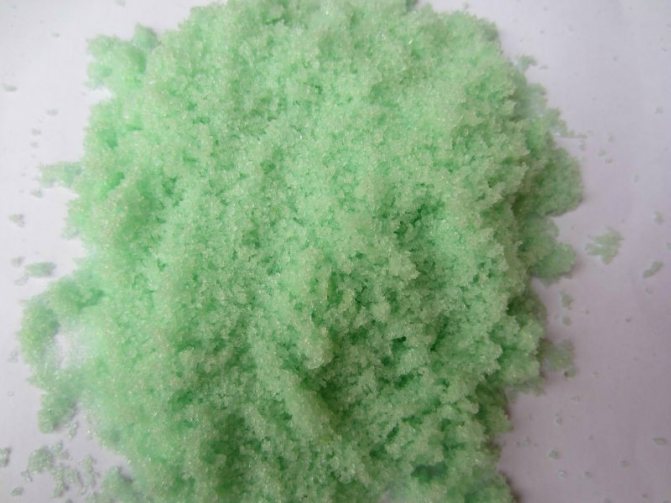

How to acidify the soil for blueberries with colloidal sulfur? Pretty simple. One kilogram of the substance is scattered over an area of about 10 square meters, after which the earth is dug to a depth of about half the bayonet of a shovel. With this ratio, the pH will drop by about 2.5 units. If this is not enough, the dose can be increased. It is advisable to do this in the fall - the process takes about 8-12 months to start. In the spring, the acidity will rise to the minimum required level, and by the end of summer, when the berries are formed, the indicator will reach the optimal value.
Ferrous sulfate is also quite easy to work with. Moreover, it gives a faster effect, though not so long-term. By adding 500 grams of powder to 10 square meters of land and digging up the site, you can achieve a decrease in pH by one unit, and it will take only one month. But such an operation will have to be done at least once a year. Otherwise, the acidity of the medium will increase again. Although, of course, before oxidation, you need to use an indicator and find out the current indicator. It is very important to know how often to acidify the soil for blueberries so that they grow well, but at the same time do not die due to excess acid.
How to determine the acidity of the soil?
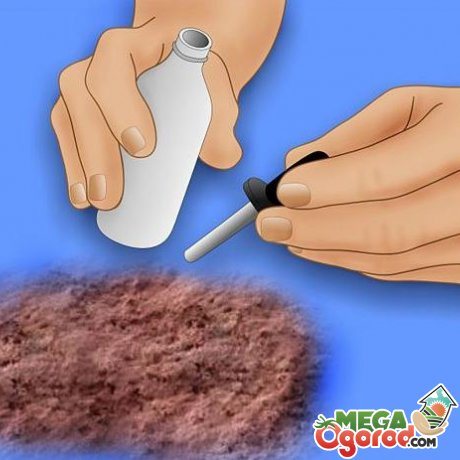

There are various ways to determine what the environment is on the site. There are the following methods for accurately identifying what is the acidity of the soil in the garden:
- Weeds are the best method for identifying soil composition. But based only on the results of your own visual perception, there is a possibility of being wrong. If nettle and alfalfa grow in the garden or bindweed of various colors grows well, then such a soil is considered alkaline. Otherwise, if horse sorrel, moss, horsetail, mint, wood lice, Ivan da Marya, buttercup appear everywhere and everywhere on the ground, this indicates an increased acidity of this soil substrate.
- Devices - for accurate determination in the industry, special devices have been produced - pH meters. They are available as handheld devices that allow you to quickly identify the alkalinity of the earth. To use it, remove all debris from the analyzed area, moisten the dried soil with water and wait until it soaks all the soil well. The stem of the appliance should be wiped with a clean cloth and inserted at least 15 cm into the soil. For a more accurate indicator, the soil next to the device should be specially compacted. For the correct result, you need to carry out 2-3 checks in different parts of the entire perimeter and display the average value.
- With the help of litmus tests - they are sold in specialized flower shops. To check, you need to dig out the soil in the required area using a shovel to a level of at least 25 cm.From there, take a few grams of earth, preferably from the wall of the vertical presentation, in order to be sure that this is not the upper layer crumbling during digging, but the inner layers. Distilled water should be purchased to eliminate any side effects from results with regular tap or spring water. If this cannot be obtained, then ordinary water should be boiled thoroughly. If, when lowering the litmus paper, it does not change color, then the liquid is suitable for use. The soil taken from the garden is placed in a rag bag and lowered into the prepared water for a period of 15 minutes. The water should be 5 times more than the soil taken (75 ml per 15 g of soil). After that, lower the strip with the indicator for 1-3 seconds. It will instantly begin to change color. Then you need to bring the reacted piece of paper to the box, where the pH of the medium is marked.
Thus, identifying the environment of a particular site is not as difficult as it seems at first glance. In addition, you can take a sample of your soil substrate and take it for a full examination.
Acids come to the rescue
Quite often, summer residents are interested in how to acidify the soil for blueberries with citric acid. And is it even possible? It turns out, yes, it is quite possible. Citric and other acids are used if it is necessary to increase the acidity of the soil, and very quickly, in a matter of hours. True, they should be used very carefully so as not to spoil the land, otherwise not only blueberries, but also many other crops will not grow on it.
So how to acidify the soil for blueberries with citric acid? It is best to use a crystalline substance. Two teaspoons are dissolved in a ten-liter bucket of water, after which the resulting liquid is poured over an area of about one square meter.
You can use the electrolyte to acidify the soil for blueberries, most importantly unused, diluting 50 milliliters per ten liters of water. This is also enough to increase the acidity of one square meter of the plot.


Interested in how to acidify the soil for blueberries with vinegar? This option also applies. For work, you need to take ten liters of water and 100 milliliters of nine percent vinegar, not essence. The resulting solution is also watered one square meter of land. However, experienced summer residents try not to use this technique. The fact is that the effect is very short-lived, it will not be enough even for a season. But the bacteria that live in the soil and contribute to the conversion of fertilizers into nutrients, the solution kills. Moreover, if you increase the acidity with vinegar every spring, then the microorganisms will not have time to recover, as a result, the yield will sharply decrease.
What should be the soil for roses. The right soil for roses
Roses are perennial plants whose roots go deep enough into the soil. Therefore, the basic preparation of the substrate for these flowers must be done very carefully. The soil for roses should be air and water permeable, loamy and slightly acidic (pH 5.5-6.5). The depth of the groundwater should not exceed 1.5 m. With a lack of oxygen, the growth and respiration of roots deteriorates, and excess moisture retards the development of the root system. Which leads to the death of the plant, while the shoots ripen with a delay.
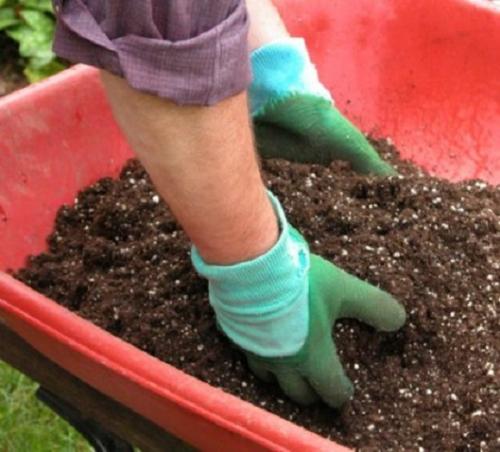

Different fertilizers increase the health of the rose
If a rose is planted in the spring, then it is better to prepare the soil in the fall. But you can do this a month before planting. The depth of the nutrient layer of soil for roses is at least 70 cm.
The planting hole is dug to a depth of 80-100 cm. The length and width of the hole depend on the size of the root system of the seedling. At the bottom, drainage from gravel and sand is arranged. But if there is a lot of sand in the soil, then such drainage will not be needed. Then the pit is filled with a mixture of a fertile top layer, excavated earth, sand, rotted manure, or compost and peat, in a ratio of 2: 2: 3: 1. Fertilization rates are determined in accordance with soil analyzes. If the soil readings do not go beyond the norm, then superphosphate (100 g per 1 m2) and ash (500-1000 g per m2) are added to the previously obtained mixture.
We use green manure
Finally, one of the slowest, but completely safe, reliable and long-term ways to increase the acidity of the soil is to use special plants - green manure. The main thing is to select suitable crops (not all siderates acidify the soil).
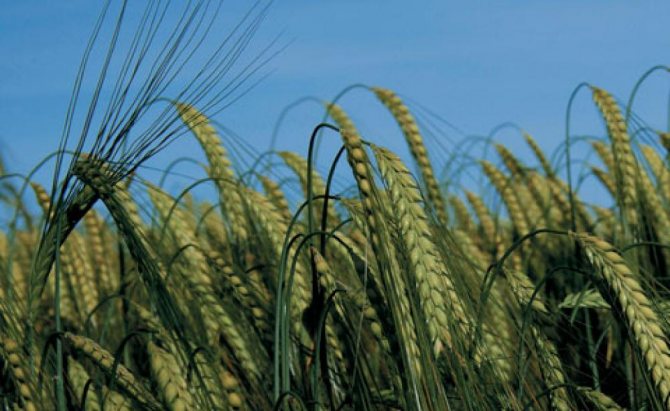

It is best to use oats, rapeseed, white mustard, and rapeseed. After a set of green mass, but before the formation of seeds, the site must be plowed, embedding the plants in the soil. Rotting them will provide the earth with nutrients and increase acidity. Yes, it will take a whole year, but you will not cause any harm to the soil, but you will achieve your goal.
Azalea, or rhododendron


Azalea (Azalea) belongs to the genus of rhododendrons, usually so called beautifully flowering rhododendrons of different species (Indian azalea - Rhododendron simsii, Japanese azalea - Rhododendron obtusum).This is a deciduous or evergreen shrub belonging to the heather family (less often small trees), it is very decorative, but rather thermophilic. It begins to bloom in early summer and simply requires acidity in the soil for good development. Medium acidity is best, providing this plant with coolness, light shade, well-drained but well-hydrated soil, and a lush bloom will come soon.
In the middle lane, difficulties associated with wintering may arise. Therefore, pay attention to zoned varieties and choose places for rhododendron wisely - protected from winds and direct sunlight. It is desirable on slopes, where the sun is only the first half of the day, or near not very tall spruces and pines. Heavy, clayey, always weeping soils should be avoided.
What can replace vinegar
There are several options for replacing vinegar:
| Organic | leaf compost; rotted sawdust and coniferous litter; peat moss (sphagnum); manure (fresh only). | 1. Acidification is slow. 2. The effect remains for a long time. 3. Keeps the soil loose by supplying additional minerals. |
| Minerals | ammonium sulfate; ammonium nitrate; ferrous sulfate; potassium sulfate; colloidal sulfur. | 1. Significantly increases acidity in a short time. 2. Chemical compositions are used with caution, as they can cause the opposite effect. |
| Siderata | oats; lupine; soy; mustard; rape. | 1. Planting such plants near hydrangeas maintains the acidity of the soil. |
Asian hybrids of lilies
Asiatic lilies tolerate slightly acidic soils. Complex hybrids have direct roots of East Asian origin. This is a very large group where hybrids and garden forms are derived from the following types of lilies: tiger, lanceolate, calloused, drooping, dwarf, monochromatic, David, Ward, monochromatic and interspecific hybrids of Dutch and spotted lilies.


It is advisable to choose sunny areas for these plants, but they can also develop well in shade.
How to cook yourself
You can prepare a suitable soil for planting yourself, make it what the hydrangea needs. Coniferous needles and peat are used for mulch - these components successfully cope with the creation of the required acidity indicator. They take coarse sand, leafy soil, peat chips, pine needles.
For the room variety, humus is not used. The substrate is prepared according to the classical formula: 2 parts of turf and peat, 1 part of sand are added to 4 parts of leafy soil. The sand is calcined, small river stones for drainage are washed and dried. Pebbles are laid out at the bottom of the pot, then the substrate is added. After planting, the top layer is necessarily loosened, which makes it possible to increase the level of air permeability. Then the soil is mulched with fresh needles.
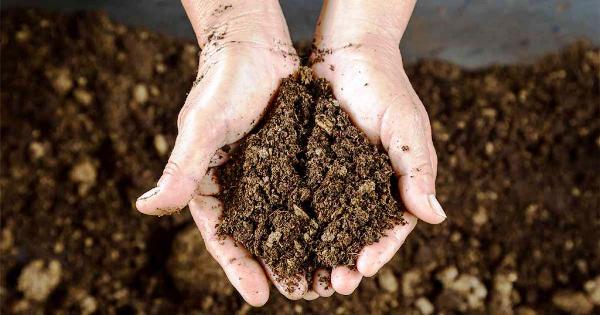

DIY soil preparation for hydrangea
Indoor hydrangea needs annual transplants after it reaches an adult 4 years of age. In this case, it is taken into account that the root system is transplanted by the transshipment method, that is, transplanted into a new pot with the previous lump of earth.
Hydrangea: description, photo
The flower got its name for its moisture-loving nature. From the Latin language, the designation "hydrangea" is translated as a combination of "water" and "jug". Officially, hydrangea is called hydrangea. In Europe, the name was consonant with the common female name, so there were many myths about whom the loving botanist Fliber Commerson honored to be the founder of the name of the flower.
There is a popular legend about the emperor of Japan, who liked white elongated panicles, he used them to apologize to his lady. Since then, the hydrangea variety began to be personified with cordiality, sincerity of feelings, a manifestation of complacency.


These garden flowers are used as the main element of flower arrangements, borders, planted in plots to divide the space while simultaneously marking the territory with abundant inflorescences of different shades. They coexist with thujas, juniper trees, but do not like to grow in the shade of tall conifers.
Hydrangeas are represented by several species: some of them belong to the shrub type, some grow like trees, the rest develop like vines. Description of the classic type of hydrangea:
- Stems grow from 1 to 3 m.In some species, the height can reach 10 m.
- Semi-oval leaves with pointed tips. The surface of the leaves is glossy, rich green.
- Flowers are collected in inflorescences, scutes or panicles. The diameter of the inflorescences can reach 20 cm. The shade of the petals depends on the species. White and pink are considered the classic colors.
- After ripening, the fruits are collected in a simple box, which is formed at the place of flowering of the inflorescence.
The genus includes several species that differ from each other.
| Characteristic |
| A shrub that stretches up to 3 m. White small flowers reach 2 cm in diameter, form shields up to 20 cm in size. It begins to bloom by mid-summer, feels comfortable in the temperate climatic zone. |
| Shrubs or trees stretch up to 10 m. The difference from other subspecies is that small flowers are collected in inflorescences - panicles. |
| Bushes grow up to 4 m. Flowers on thyroid inflorescences can be blue, pink or white. This is the only species that can change the hue of the petal after changing the composition of the earth. Large-leaved hydrangia are often chosen for growing as a houseplant. There are over 80 varieties of indoor hydrangeas. |
Hydrangea is grown in clubs as a garden type or on a windowsill as a houseplant. Flowering begins with the onset of summer and continues until the autumn cold. Inflorescence scutes or panicles make the hydrangea visible from afar. The shades of the petals attract gardeners. Hydrangeas can decorate flowerbeds, make any windowsill elegant.
Tenacious creeping
The creeping insect (Ajuga reptans) is a rapidly growing ground cover. It begins to bloom in late spring. Pyramidal inflorescences of purple, pink, white flowers. Prefers slightly acidic soil. This plant of forests and steppes smoothly migrated to our sites. Many people like its early flowering, while others choose it as a good ground cover. Yes, and in rockeries such a useful decoration will always find its place.


Be that as it may, demand creates supply, and now the tenacious has many beautiful varieties. Personally, I really like the Pink Elf variety - the bushes are very compact, and the flowers are from light pink to dark pink shades.
Badan
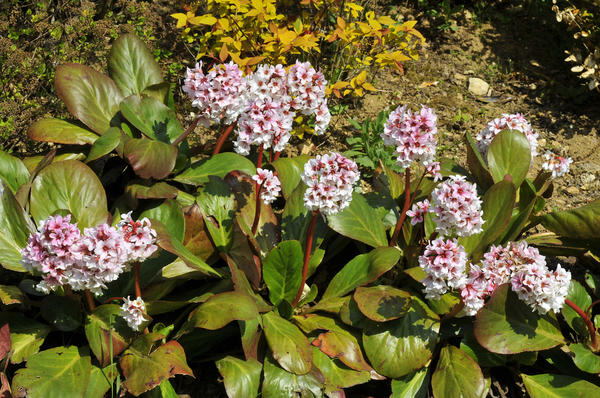

Badan (Bergenia) is a lover of the most acidic soils. Increasingly, this beautiful and medicinal plant adorns stone gardens, hills and the area around the reservoir. See how good he is at landings. The blooming period of the berry falls in the spring. It has extraordinary thick leaves that look like burdock leaves from a distance. And inflorescences of a bright crimson color attract attention. In floriculture, thick-leaved or Mongolian badan (pink and crimson inflorescences) and heart-leaved badan (pink inflorescences) are very common. Often I see on bags of seeds that slightly acidic soil is preferable for bergenia, but this is even an understatement.
Influence of soil acidity level on flowering
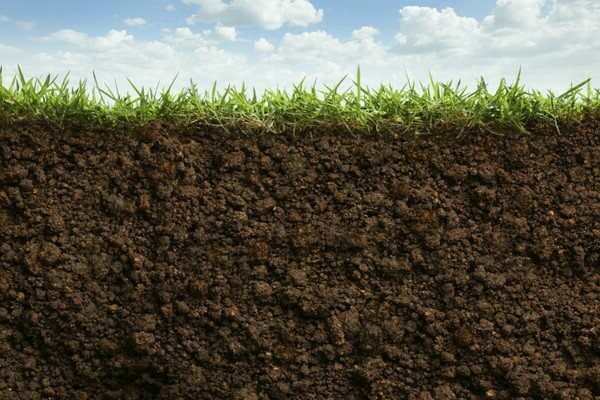

Hydrangea will be the queen of your garden if you choose the right place for it and provide the necessary conditions. Some consider her capricious, but she is not. Subject to the light regime and the right soil with hydrangea, there will be no hassle, and you can enjoy its flowering all summer long.The soil for the hydrangea should be loose enough to provide free air access to the root system and free moisture penetration. Hydrangea loves water very much, it must be watered often and abundantly, therefore, when planting a plant, measures must be taken to exclude stagnant water. And of course, the level of acidity of the soil is important, since the comfort and color of the hydrangea depends on it.
The ideal pH is from 5 to 6, you can determine this using a special device at home or order an analysis in the laboratory.
If the acidity level suits the hydrangea perfectly, then its inflorescences will be colored blue-blue, and the foliage will have a dark green color .. If the soil is neutral or alkaline, then the inflorescences will acquire lilac-pink shades, and the foliage will become paler than earlier.
If the acidity of the soil is too high, then it is recommended to add alkaline additives (for example, lime or dolomite flour) to it, but in the case of hydrangea, this must be done carefully so as not to overdo it. If the soil is not acidic enough, then completely different additives will be required that will increase the level of acidity and help create the most comfortable environment for the hydrangea.
May lily of the valley
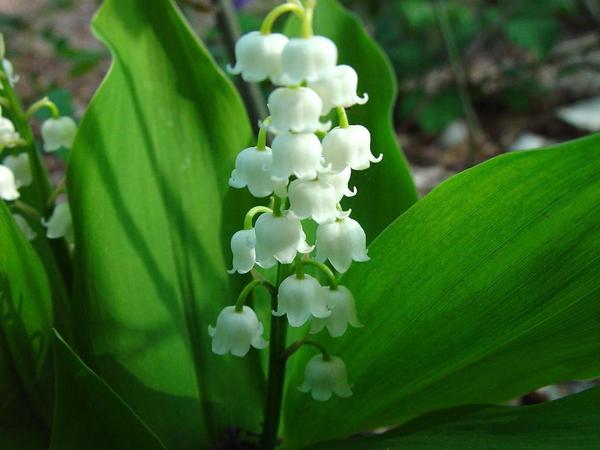

Lilies of the valley (Convallaria majalis) have long been a symbol of spring and tenderness. Having once brought a lily of the valley to my house, I have never regretted it. They are perfectly adapted to soils of medium acidity, but prefer slightly acidic soil. Bright greenery, complemented by adorable little white bells, will fit very well into any garden. It should be remembered that the fruits of this plant are poisonous, and the crimson balls should be removed in time. I combine lilies of the valley with moss, common spruce, as well as tree hydrangea and hosta.
Mix garden soil with peat and sand
Soil for hydrangea:
- Soil preparation. Hydrangea grows well in moist and acidic soil. Moreover, the more acidic the soil, the brighter the colors of the flowers. For planting hydrangeas, garden soil is mixed with peat and sand in equal proportions, thereby obtaining the necessary pH level for favorable growth.
- Soil acidification. For acidification of the soil, ready-made acidifiers are most often used, such as Phyto-link or sulfur. But you can use other drugs, for example: electrolyte solution (10 ml per 1.5 liters of water), citric acid (1 tsp per 10 liters of water) or ferrous sulfate. In the future, watering the plants must be carried out with the addition of preparations containing ammonia to maintain the required level of acidity.
Video:
Mnogoryadnik prickly
A beautiful fern with a height of about 80 cm. It can grow in the shade and in open sunny areas, but an important condition for its growth is the high humidity of the soil and the environment.
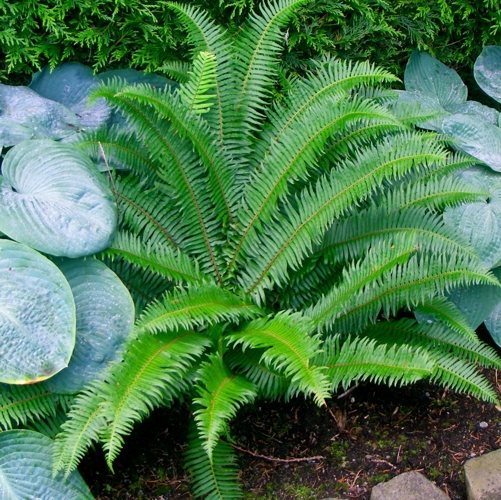

Of course, the choice is not limited to the listed plants, and although their variety is not so great, you can also come up with successful "layouts" from them, which will delight you for more than one year.
In addition, today there are plants specially bred for soils with an acidic reaction. I especially envy the inhabitants of the southern regions where camellia can be cultivated. It is a very common plant on the Black Sea coast. For the first time I saw camellia in Sochi in the botanical garden, its alluring aroma and beautiful flowers amazed me to the depths of my soul. But she also prefers soils with high acidity.
LiveJournal
Viburnum
Viburnum (Viburnum) is a small deciduous shrub, sometimes a small tree. For this plant, a weakly acidic soil will be optimal, too acidic will not work. This plant is a find due to its decorative effect in the spring, when the bush is strewn with umbrella-shaped inflorescences, and in the fall it has no equal at all. Bright red berries - like beads among colorful autumn foliage.


Almost all plant species - forked viburnum, gordovina viburnum, toothed viburnum, Canadian viburnum, common viburnum - develop well on slightly acidic soil. In addition, viburnum is an unusually useful plant that will help prevent some health problems or solve them using traditional methods.

